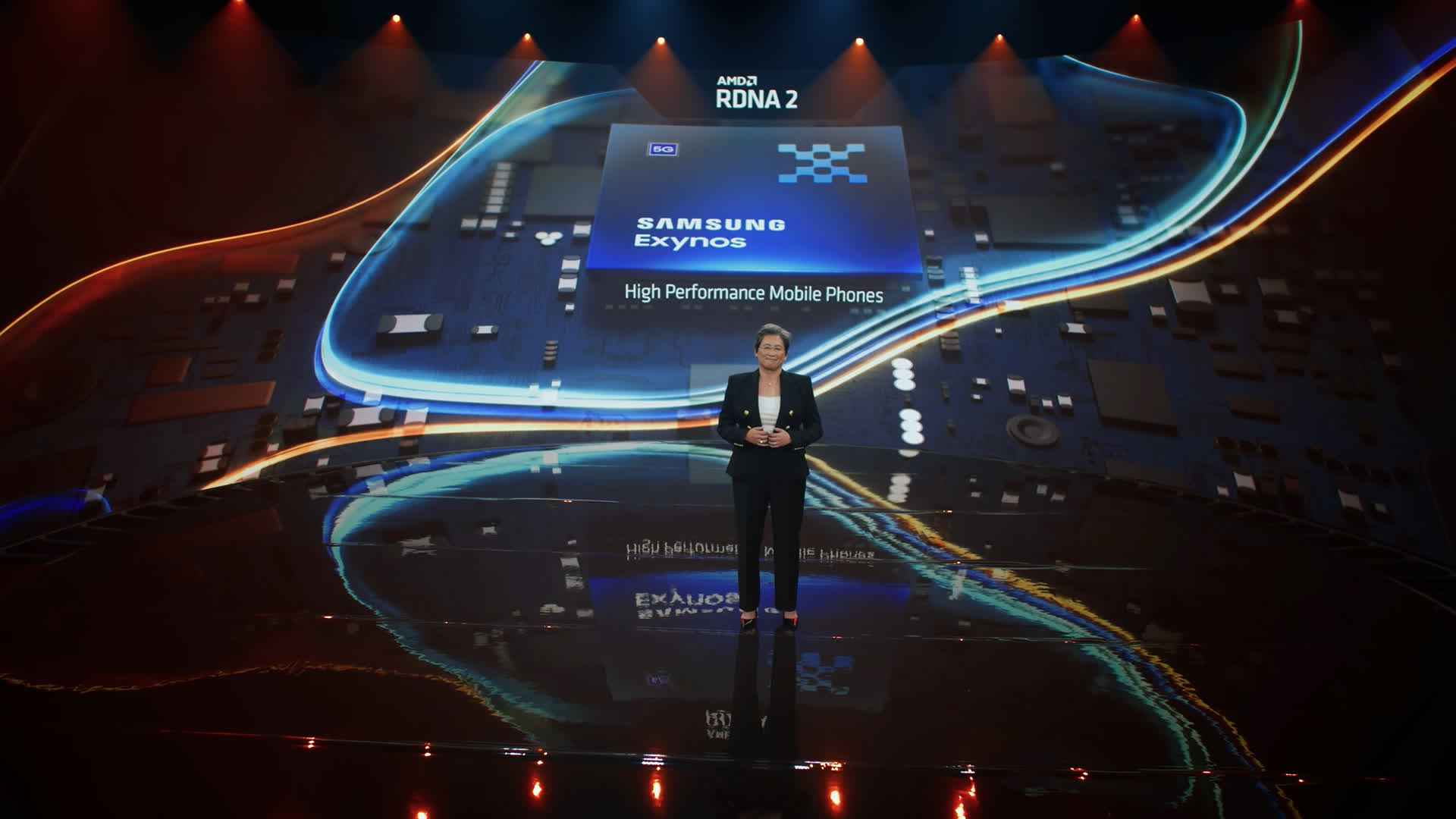Highly anticipated: The AMD and Samsung partnership to bring Radeon graphics to a mobile SoC, two years in the making, is at last close to bearing fruit. While established mobile leaker Ice Universe claims that the product's release has been pushed back to July, rumors suggest it's more than capable of taking on current and upcoming Mali GPUs.
The plans for a Samsung SoC featuring Radeon graphics been talked about aplenty since the initial reveal in 2019, but it’s back in the limelight after AMD CEO Dr. Lisa Su brought it up during her Computex 2021 keynote.
According to Ice Universe, the Exynos + Radeon collaboration was due for release this month, but it’s been pushed to July. However, samples are already in hand of partners and in the testing phase. If posts on Korean forum Clien are to be believed, the SoC is showing strong results against competitors after having beaten Apple's A14 Bionic earlier this year.
Exclusive:Samsung×AMD GPU was originally scheduled to be released in June, but now it has been postponed to July, when we will know the performance of AMD GPU on Exynos and other details. pic.twitter.com/GM6W8l3EKY
— Ice universe (@UniverseIce) June 20, 2021
The Clien thread's OP claims that, at peak performance, the mobile RDNA2 GPU was able to narrowly beat out Arm’s next-generation Mali GPU. It also saw harsher throttling than expected after initial rounds of testing, dropping about 20% performance after the first test and then 30% after the second -- but even when throttled this badly, the mRDNA2 GPU was allegedly still able to beat out the current top end Mali GPU (presumably the Mali-G78, unveiled last year).
The forum posts also allege that results are good enough that Samsung are abandoning their own GPU development efforts, and that Google has been eyeing up the collaboration and may have signed up as a customer.
News about AMD mRDNA2 peak/overall performance
— Tron ❂ #MicrosoftEvent (@FrontTron) June 19, 2021
OP https://t.co/6oPzcup7dP
The rumor of which mRDNA2 is set to be equipped in the next Exynos is overwhelming the competitor chip in peak performance, according to an actual performance test.
(1/5)
While these early results look promising, a drop in performance by 30% after just two test runs isn't great, especially as GPU-demanding loads like games require sustained performance rather than transient loads like many benchmarks. This, unfortunately, seems to be a product of the SoC's manufacturing process more than the chip's own design, as previous testing by Anandtech has pointed to Samsung's 5 nm node still only playing catch-up to TSMC's 7 nm products in efficiency terms.
Then again, the Exynos-Radeon collaboration has also been hinted to be coming to laptop platforms in place of Qualcomm's 8cx Gen 3, which should offer much more headroom in thermals and power management. That would see the chip pit against the 8cx's Adreno graphics, details of which Qualcomm have remained rather tight-lipped about to date.
